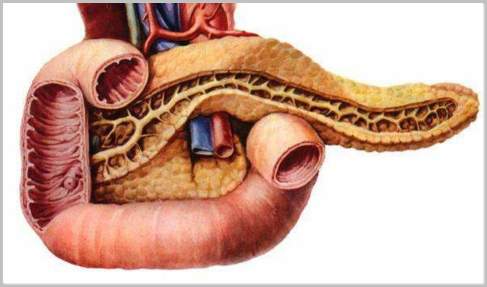
The gastrointestinal system is a complex system of organs which are responsible for digesting food and absorbing nutrients that you need in order to survive. The duodenum is a part of gastrointestinal system, located just below the stomach. The structure of the duodenum is quite simple, however its function is somewhat more complicated. This article will outline the structure and function of the duodenum.
Structure of the duodenum.
The duodenum is located in your gastrointestinal tract just past the stomach. Some textbooks describe it as being the first part of the small intestine, while others consider it to be a separate organ entirely. Regardless of this debate, the duodenum is a small tube approximately 10 inches long and not more than an inch or two in diameter.
The duodenum is broken in to four parts. These four parts are somewhat arbitrary, and are used mostly by surgeons to enable them to describe the area they are working around in more detail. The entire duodenum is essentially a long tube. At the bottom of the stomach is a small valve known as the gasteroduodenal junction. Just pass this junction is the first part of the duodenum. The first part of the duodenum is located very close to the liver and pancreas.
Approximately 3 inches past the gasteroduodenal junction, the duodenum begins to curve around the pancreas. It is in this area where there is a drain which leads to the bile duct. Bile is drained from the gallbladder into this portion of the duodenum. This aids in digestion of many different types of foods.
Because of the duodenum’s close proximity to the gallbladder, gallstones may have an effect on the duodenum. A gallstone which jams into the bile duct can ulcerate into the duodenum, causing a significant obstruction in your gastrointestinal system. This condition is known as gallstone ileus. It can be very painful and is a serious medical condition which often requires surgery to correct.
Any ulceration through the duodenum, which is a form of peptic ulcer disease, can damage many of the organs around the duodenum. The pancreas is one of the most sensitive organs to an ulceration. It is located quite close to the duodenum. As such, a duodenal ulcer can cause significant damage to the pancreas.
The far end of the duodenum leads to another structure known as the jejunum. The jejunum is either the first part of the small intestine, or the second part if you consider the duodenum to be the first part of the small intestine. Again, this distinction is not particularly important to anyone who is not in anatomist. The jejunum is another long, thin tube where more digestion takes place, and many nutrients are absorbed in to the body.
Function of the duodenum.
The duodenum is a very metabolically active area of your gastrointestinal system. In addition to bile from the gallbladder, there are many enzymes in the duodenum which are responsible for breaking down much of the food you eat.
The duodenum is also responsible for triggering hunger signals and causing the stomach to empty after you eat. It does this by a complex system of hormonal pathways. These hormones cause the valve between the stomach and the duodenum to open after a person eats. This drains the stomach and moves the newly eaten food along the gastrointestinal system.
Because of its key role in regulating hunger and movement of food throughout your gastrointestinal system, the duodenum is often an organ which is operated on during gastric bypass surgery. There are several techniques for gastric bypass surgery, and not all of them involve the duodenum directly.
The duodenum is an often overlooked organ in the gastrointestinal system. This is unfortunate, because it is a vital organ involved in the regulation of food absorption and your metabolism. in fact, more absorption of food takes place in the duodenum that does in the stomach. Yet somehow the stomach is more famous – maybe because the duodenum doesn’t grumble when you’re hungry. The squeaky wheel gets the grease after all.

